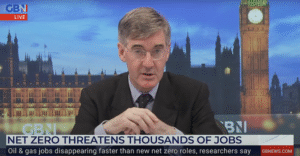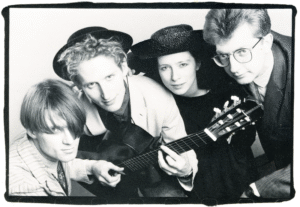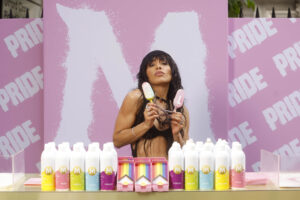Aesthetic marketing is the key to reaching Gen Z, expert reveals why

With data showing 99% of Gen Z skip ads online and 63% use ad blockers², brands need to be creative with their marketing strategies. Social media ads alone simply won’t do.
Enter, aesthetic marketing.
What is aesthetic marketing?
Alexandra Haider, Senior Content Editor at Youth Marketing Insight Specialists, Pion explains:
“Aesthetic marketing involves a brand updating their look to a particular trending artistic style, or using visual elements relevant to pop culture moments and online trends, to appeal to the temper of the times. This can be anything from switching up their colour palettes and fonts, to creating new product and packaging designs.
“Aesthetic marketing is at the forefront of cultural relevance – in fact, the two are often intertwined. For young consumers, culture is pop culture: memes, movements, trends, clothing and now advertising are closely linked to what is trending in the cultural zeitgeist. We’re seeing it happen more and more as exploding topics in pop culture become the basis for brand strategy and activation.”
3 Examples of aesthetic marketing (and why they work)
Y2K and 2010s revival
Fashion is no stranger to reviving trends from previous decades, so it was only a matter of time before we’d see low waisted jeans and cargo trousers dominate the cat walks.
The Y2K and noughties trends aren’t only driven by the natural cycle of fashion though, it’s fuelled by the feeling of nostalgia.
Amidst a cost-of-living crisis (with 65% of Gen Z using some form of side-hustle to supplement their incomes) and a mental health crisis, many of us are looking back to simpler, happier times… and brands are paying attention.
Campaigns and collections
Nike – Nostalgia marketing works particularly well for heritage brands like Nike, as their customers can relive some of their favourite pieces from past lines. Over the years, the sportswear giant has released classic styles of the Air Max with modern updates, with many selling out in a matter of hours or days.
Too Faced – Jumping on the Y2K aesthetic, Too Faced released several collections including eyeshadows and lip products which feature retro packaging reminiscent of the era. Similarly, their recent campaigns have nostalgic references to really tap into that emotion and drive sales.
Why does it work?
Alexandra comments: “Our 2024 Youth Trend Report highlights that 43% of Gen Z purchasing from nostalgic brands are doing so for the aesthetic, while one in five (19%)³ would shop with a brand if it made them feel sentimental.
“This shows us that nostalgia really is a powerful emotion that can influence our buying decisions. While we’re chasing our favourite nostalgic aesthetics, we’re likely considering things like cost and quality, less. Equally, pop culture is a huge driver of nostalgic brands.
“Saltburn is a great example of this, as this year-defining film quickly became a cult classic for Gen Z. Chipped nails, Boho bags, smudged eyeliner and metallic pops quickly began to trend. TikTok exploded with Saltburn-inspired tutorials, whilst catwalks at London Fashion Week were steeped with fur accessories and jewelries, reminiscent of the ‘loud luxury’ aesthetic that the film became notorious for.
“We saw brands tap into this conversation in a few outlandish ways. Lush went viral after launching a ‘Saltbomb’ based on *that* bathtub scene, whilst sellers on Etsy and Amazon released Jacob Elordi-themed candles. Gen Z loved it – they’re receptive to all things outrageous, especially when they’re well-executed to the brand’s image or reputation.”
Brat summer
Thanks to Charli XcX’s new Brat album which came out in June this year, clean-girl aesthetics are out and the feral girlies are in. As consumers swap chic fits and pink colour palettes for messy, slime green looks, brands have been quick to jump on the aesthetic – and it’s already paying off.
Campaigns and collections
ColourPop – Primarily targeting younger consumers, jumping on the Brat summer trend will have been a no brainer for the American cosmetic brand. From creating a brat summer make-up guide to building a customisable palette with all the lime green you can dream of, they’re already getting great engagement for their efforts.
USA Election – The cultural influence of Brat has even found its way into politics. After Joe Biden announced he was no longer seeking re-election, and subsequently endorsed Kamala Harris, Charli XCX offered her seal of approval. Tweeting “Kamala IS brat” on X, the Vice President changed her account header to a Brat-style banner. Politicians using celebrities to capture the youth vote isn’t a new phenomenon – but this engagement has already been dubbed a powerful way to swing the youth vote.
Why does it work?
Alexandra comments: ““In 2023, we were gripped by self-improvement trends: #ThatGirl, #WhatIEatInADay, #DayInTheLife. The ultimate Girl Boss was someone who woke up at 5am, journalled, consumed a lot of avocado toast and miraculously also had the energy to socialise, work and exercise.
“These trends were ultimately damaging. We saw in our research that 53% of Gen Z had taken wellness advice from social media – and a massive 94% of Gen Z women said this kind of content made them feel like they “weren’t achieving enough”.
“Enter Brat Girl summer. Ultra-polished, clean girl aesthetics are out. Chaos is officially in vogue. Brat girl summer says it’s okay to be a little bit messy. This is beyond refreshing for a cohort of consumers who have been constantly exposed to aspirational, edited content. In fact, it’s freeing. Do whatever you want – f*ck it, it’s Brat.”
Blokette
In 2023, we saw ‘Blokecore’ take over TikTok – think football shirts, Adidas trainers, baggy jeans and vintage-inspired athleisure. This year, ‘Blokette’ is the latest iteration. Combining the aesthetic trend of coquette with blokecore, ‘Blokette’ plays with the constructs of gender: masculinity mixed with femininity, as consumers pair football shirts with brightly-coloured hair ribbons.
Searches for ‘England jerseys’ surged by over 600% ahead of the Euros finals, and we saw celebrities such as Dua Lipa and Sabrina Carpenter spotted wearing vintage jerseys.
Campaigns and collections
Adidas x Wales Bonner – No brand represents streetwear culture quite like Adidas. Sambas are having a moment this year – everywhere you go, you’ll probably spot someone sporting a pair. Adidas’ collection with Wales Bonner in 2024 sold out almost immediately, with consumers drawn to the vivid colour palette and signature three stripes. The collection wasn’t just shoes, either: playing into the Blokette trend, consumers could find midi-length leather skirts and raglan-sleeved Adidas cardigans.
Miu Miu fw22 – A precursor to Blokette, Miu Miu’s fw22 collections included a collection that combined a pleated micro-mini, a sporty top and ballet flats. Quickly, the look was transported from runway to streetwear, with celebrities such as Bella Hadid and Rina Sawayama sporting akin looks.
Why does it work?
Alexandra comments: “Sport has historically always been a unifying concept – there’s nothing quite like the mood of the nation when your home team is winning. In a time where consumers are feeling collectively anxious, they want to rally together under a common cause. It’s not surprising we’re seeing this reflected in fashion trends, especially when it comes to Gen Z, who are constantly experimenting and reviving old trends with their own twists.
Blokette is the perfect fusion of gender fluidity in contemporary fashion. It’s cool, it’s trendy, and it’s low maintenance. This is poignant when you consider the way fashion changed during the pandemic. In a post-pandemic world, we’re still holding onto the clutches of comfort: it’s why items like Crocs and Uggs were revived, and remain a staple. Blokette allows us to retain the comfort of baggy clothing, whilst adding a feminine twist. It’s inclusive, it’s unifying – it might just be the trend of the summer”.





